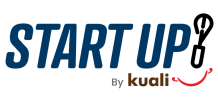About this module
Money talks, and in the world of business, it’s important to manage your finances throughout every step of your business! Learn about the many key sectors and hidden costs that go into running a baking business, from crowdfunding, production, operations and more. Find out which parts you shouldn’t overlook, and how you can budget your money smartly to steer your business forward!
Narration
Let’s talk about cash flow, which is simply the actual money you have at your disposal or the actual cash you have in hand that you can use now.
Let’s take a different approach to this subject.
Imagine your business as a black box. What you put into it, will get you the output accordingly.
For example, you put raw materials such as ingredients and packaging into the black box and you will get a food product as the output.
Within the black box, there are already existing costs such as labour, utilities, machinery etc.
Existing costs are constant and are called Fixed Costs.
Anything else that is put into the black box, are Variable Costs or costs that increase according to production needs.
This simple illustration is a guideline on how you should approach your finances or bookkeeping for your business.
You want to keep it simple when tracking your cash flow. At any one time, your cash flow must be positive – meaning that the incoming should be higher than the outgoing.
If your cash flow is negative – meaning that the outgoing is higher than the incoming, you need to find out why it has become negative.
If you find that your costs were too high, you should look into your costing records.
There are two ways to record your costings.
Traditional Based Costing, where everything is lumped together as a cost of production or Activity Based Costing, where costs are divided according to usage.
To illustrate Traditional Based Costing, take for Example, the total electric bill of RM1,000 is divided equally among 5 products, so RM1,000 in electric bill divided by 5 products – the electricity cost per product is RM200.
Then, there is Activity Based Costing, where costs are divided according to usage.
Using the same Example, your total electric bill of RM1,000 is divided according to electricity usage by each product – estimated by the total time the air conditioning, mixer or oven is used during production.
Let’s say Product 1 takes up 10% of electricity usage -> 10% of RM1,000 is RM100. If Product 2 takes up 20% of the electricity usage -> it takes RM200.
As a comparison, your rental cost per product using Traditional Based Costing is RM200 per product, whereas your rental cost per product using Activity Based Costing varies according to how much space it is using.
Activity Based Costing is a true measure of product costing.
In simple terms, you want to keep accurate records of your incoming and outgoing cash, in order to make sure that you always have positive cash flow.
In so doing, you will be able to identify where you have to cut your cost and where you could increase your sales.


